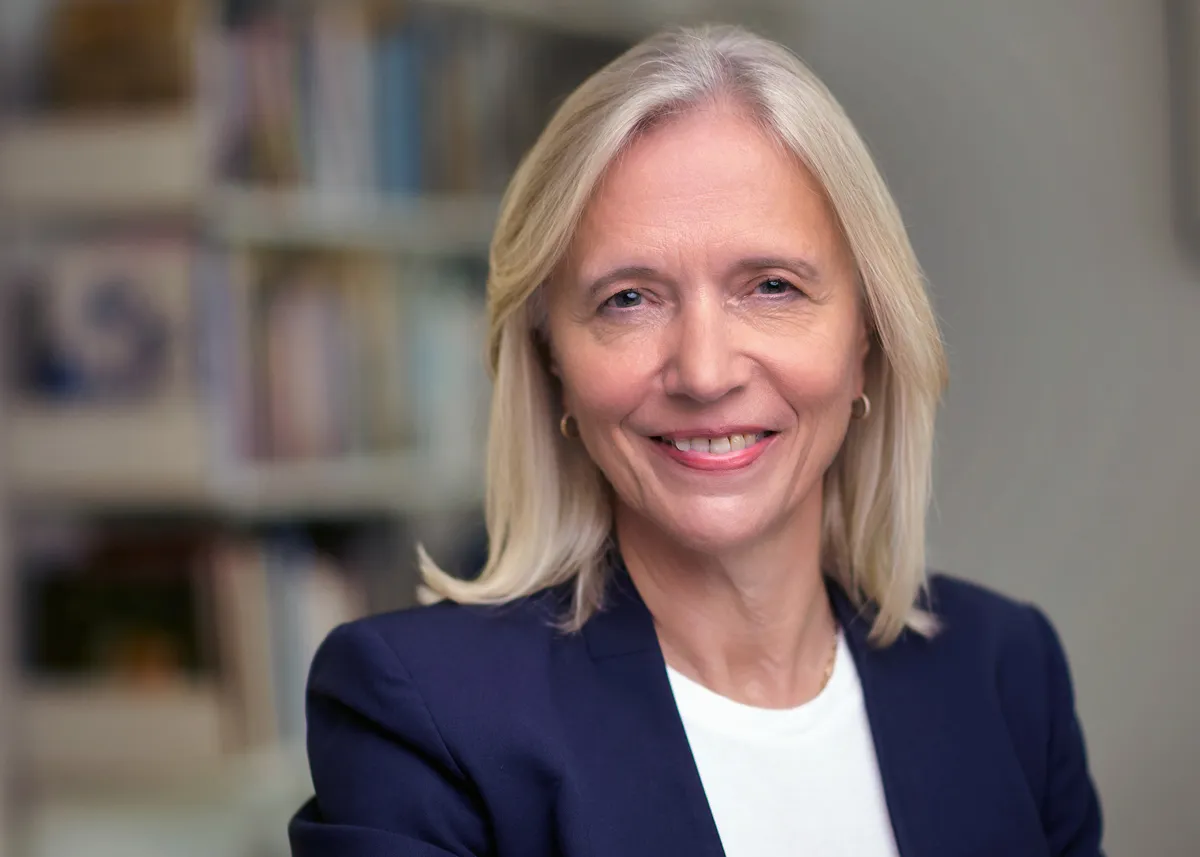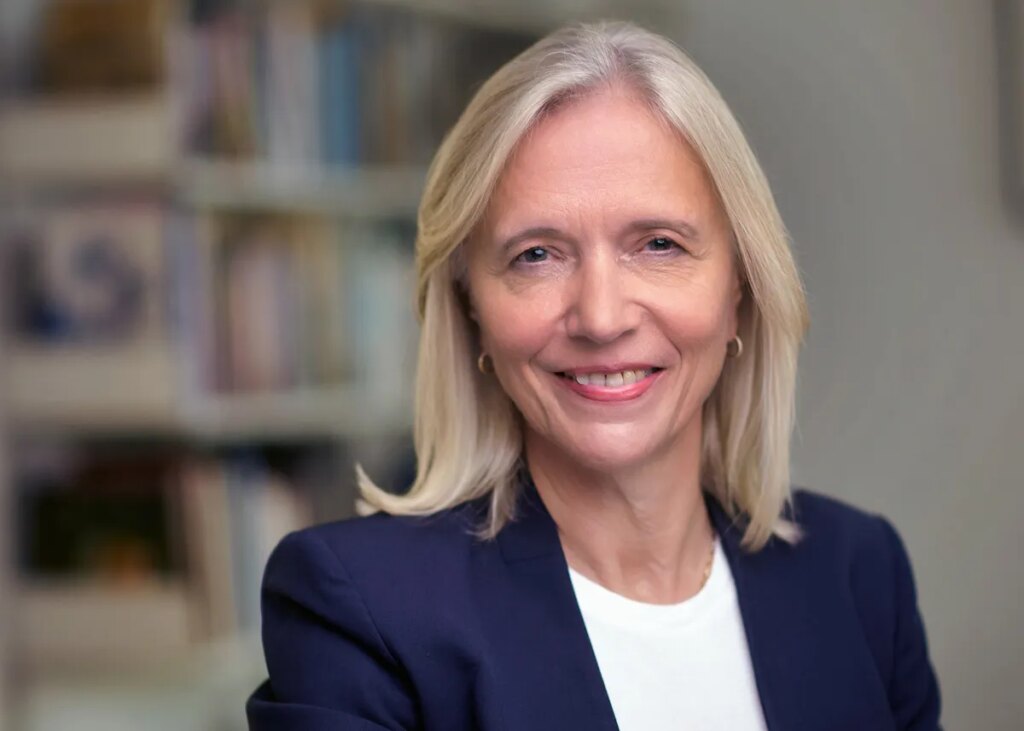
The Guggenheim Museum announced that Mariët Westermann, who is currently the vice chancellor of NYU Abu Dhabi, will be the next director and CEO of the Solomon R. Guggenheim Museum and Foundation, which oversees four museums around the world. She succeeds Richard Armstrong, who has held the role for the last 15 years. She will officially begin her role on June 1, 2024.
Within the art world, Westermann is somewhat of an unusual choice. Ahead of the announcement, the news of the forthcoming director had captivated the international art world, with several names floating around, particularly those of directors of US-based museums, as potential successors to Armstrong. In a release announcing her appointment, the museum said Westermann has “a proven track record of successfully leading world-renowned organizations in higher education and philanthropy, dedicated to the arts and humanities. She brings deep knowledge of art history, museums, and research combined with expertise in institutional management, philanthropy, and international relations.”
Westermann, who is a historian of Dutch art, has been with NYU since 2002. She was initially director and professor at NYU’s acclaimed Institute of Fine Arts, before being appointed NYU Abu Dhabi’s provost, a role she held from 2007 to 2010. She rejoined NYU Abu Dhabi in the roles of vice chancellor and chief executive, as well as professor of arts and humanities, in 2019. Among Westermann’s achievements at NYU Abu Dhabi, which is its own degree-granting institution, are recruiting the university’s first Nobel Laureate, Wole Soyinka; establishing MFA and MBA programs at the campus; and developing NYU Abu Dhabi’s first Climate Action Plan, with the aim to achieve carbon neutrality by 2050. With the Louvre Abu Dhabi, she also co-convened an international conference titled “Reframing Museums” in 2020.
Prior to NYU Abu Dhabi, she was associate director of research at the Clark Art Institute at Williams College in Massachusetts and was also on the faculty of Rutgers University from 1995 to 2001. From 2010 to 2019, she served as executive vice president at the Mellon Foundation. As a curator, Westermann led the organization of the traveling exhibition “Art and Home: Dutch Interiors in the Age of Rembrandt” (1997–2001), which made stops at the Denver Art Museum and the Newark Museum, as well as serving as a curatorial consultant for the “Jan Steen: Painter and Storyteller” (1994–96) at the National Gallery of Art in Washington, D.C.
“We cast a very wide net and interviewed extensively to identify the right person for the Guggenheim at this time,” J. Tomilson Hill, the Guggenheim’s board chair, said in a statement. “For the past six months we have utilized a systemic search process, using a values-based approach, where we identified those qualities necessary in our new director for them to succeed. We evaluated each candidate based on those attributes. Dr. Westermann brings a unique set of qualities and experiences to this critical role—a wide ranging world view, experience in navigating multiple stakeholders and critical issues across geographies, all rooted in a deeply held belief in scholarship, excellence, and the power of arts and culture to inspire and connect.”
Westermann is the third woman to lead the Guggenheim in its 86-year history and the first to serve as both director and CEO. The institution’s first director was the artist Hilla von Rebay, who worked closely with Solomon Guggenheim in its establishment as the Museum of Non-Objective Painting in 1937. (The museum was renamed in 1952, three years after Guggenheim’s death.) In the years since, the museum has had only five additional directors: James Johnson Sweeney, Thomas M. Messer, Thomas Krens, Lisa Dennison, and Armstrong.
In addition to running its New York museum, housed in its iconic Frank Lloyd Wright–designed building, as director of the Guggenheim, Westermann, will also be charged with the the Peggy Guggenheim Collection in Venice, as well as “providing collaborative leadership” with the directors of Guggenheim Museum Bilbao in Spain and the forthcoming Guggenheim Abu Dhabi, which is expected to be completed in 2025. Bringing to fruition an extension of the Guggenheim Bilbao in Urdaibai, a natural reserve east of the museum, will also likely be part of Westermann’s charge.
“It is a great honor to be joining the Guggenheim, a unique institution with a beautiful mission dedicated to modern and contemporary art in four distinctive museums on three continents,” Westermann said. “Each of the museums exists to create opportunities for anyone to engage with the transformative and connective power of art and artists, from New York to Bilbao to Venice to Abu Dhabi. I have been blessed with wonderful experiences as an art historian, global educator, curator, philanthropist, and academic leader. The kind of complexity and high aspiration that have been so motivating to me in these prior roles has prepared me to help the Guggenheim realize its full potential as a constellation of museums, united in one mission and grounded fully in their local environments and communities.”
Last July, Armstrong announced that he would depart his role, saying in a statement, “I’ve had the opportunity to lead efforts that ensure solid footing and deliver a robust global cultural program for the Guggenheim. I’m proud of what we have accomplished including: caring for the staff, embracing principles around DEAI and sustainability, defining our brand for the future, and coming through the pandemic with financial health.”
During his tenure, Armstrong more than doubled the Guggenheim’s endowment. Under his direction, the museum presented exhibitions that looked to expand the canon of art history, including thematic shows focused on the Zero movement, art in China after 1989, and contemporary art from Latin America, the Middle East, and North Africa, as well as major solo shows for artists like Cecilia Vicuña, Gego, Doris Salcedo, Etel Adnan, and Hilma af Klint, which broke the museum’s attendance records.
Armstrong’s tenure also saw several controversies. Among these are the delays in building the Abu Dhabi branch, which has faced allegations of poor working conditions at Saadiyat Island, where the museum is to be sited. In response to these allegations and subsequent protests, Armstrong and other museum officials visited “the workers village to ensure that living conditions for workers who will work on the Guggenheim Abu Dhabi will set new and respected standards for workers engaged in building other projects on Saadiyat Island,” according to a statement. (The Guggenheim Abu Dhabi was not under construction at the time of these protests in 2014.)
In New York, he faced allegations that he and others in power created a discriminatory work environment. Those allegations stemmed from a controversy related to a 2019 exhibition focused on Jean-Michel Basquiat’s The Death of Michael Stewart (1983), also been known as Defacement. That show was organized by Chaédria LaBouvier, an independent curator who accused the museum’s leadership of creating a racist environment during her time organizing the show and after it opened.
An investigation that was finished in fall 2020 “concluded there is no evidence that Ms. LaBouvier was subject to adverse treatment on the basis of her race,” according to New York–based law firm Kramer Levin, which conducted it. Shortly afterward, Nancy Spector, the museum’s artistic director and chief curator, resigned from her post.
In the wake of this controversy, the Guggenheim hired Ashley James as associate curator for contemporary art in 2019, making her the first Black person to hold a full-time curatorial post at the museum in its 60-year history. Then, in early 2021, Naomi Beckwith was named deputy director and chief curator of the Guggenheim.
In a statement, Wendy Fisher, the president of the Guggenheim Foundation, said “I am confident Dr. Westermann will ably uphold the institution’s founding vision while leading our constellation of museums to a more sustainable future, redefining the Guggenheim’s role in public discourse, and opening our doors—whether physical or virtual—to an ever-broader audience.”
Fisher added, “I am confident Dr. Westermann will ably uphold the institution’s founding vision while leading our constellation of museums to a more sustainable future, redefining the Guggenheim’s role in public discourse, and opening our doors—whether physical or virtual—to an ever-broader audience.”


